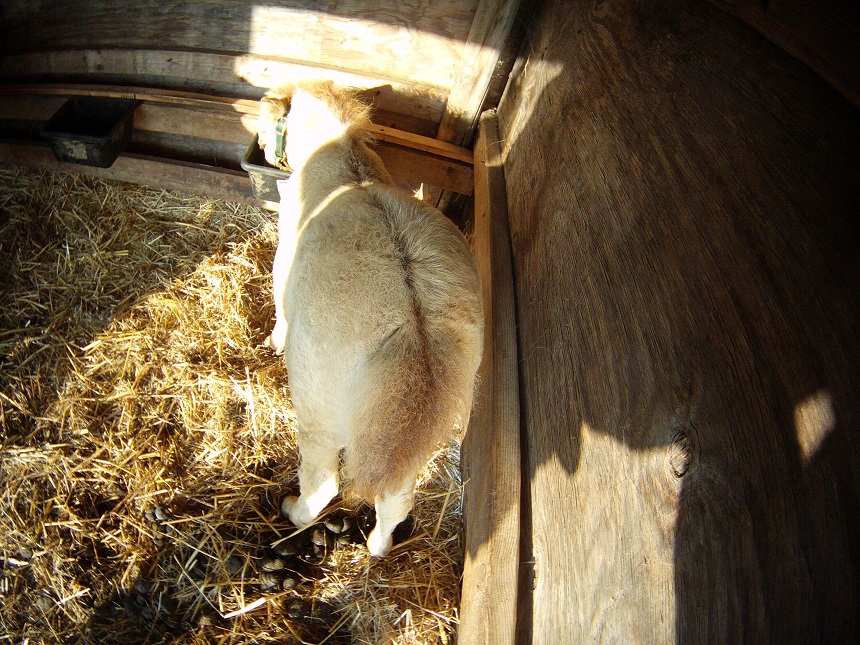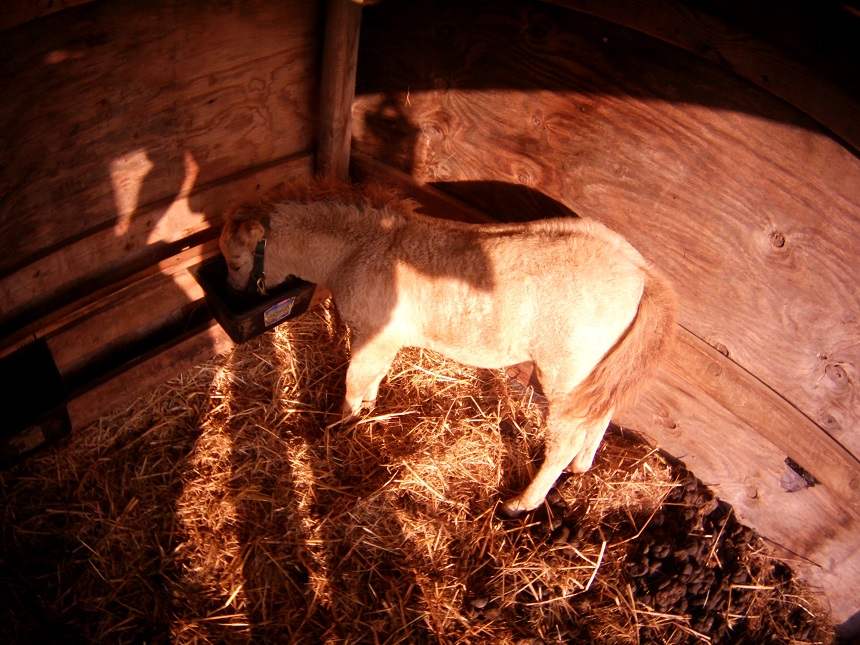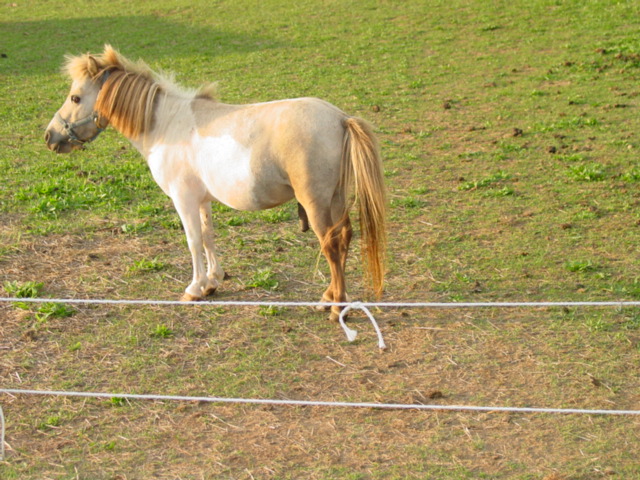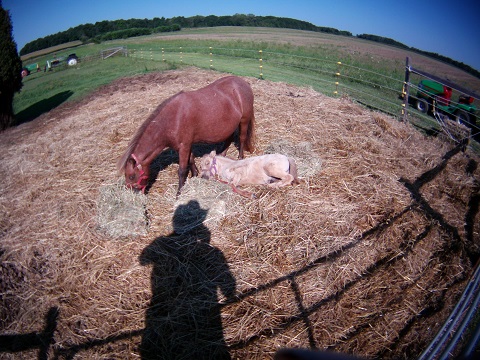nhg
Junior Member
 
Posts: 2,429 
|
Post by nhg on Sept 6, 2015 4:42:41 GMT
So my understanding is that a buckskin and a dun are basically the same thing but the dun has the dorsal stripe and possibly the leg barring, etc. Where the buckskin just has the light- dilute bay- colour without the dun factors. Then what's a dunskin?
And what's a dunalino? A palomino with dun factor?
|
|
Deleted
Deleted Member
Posts: 0
|
Post by Deleted on Sept 6, 2015 4:59:04 GMT
They look similar but are different genes.
Buckskin is bay with a cream modifying gene. Dunskin is buckskin with an additional Dun modifier. A lot of buckskin's have counter-shading that mimic the dorsal striping a true Dun has.
A palomino is a chestnut with the cream modifier. Just like with a Dunskin, is a dunalino with an additional Dun modifier.
So basically different genes, producing a similar effect.
Not sure if that answers your question or not, but hopefully it helps
|
|
|
|
Post by horselover4life on Sept 6, 2015 11:54:34 GMT
Answers the question but my thought on the subject is... Both are beautiful!!  Can you tell I am not a breeder... Can you tell I am not a breeder...
 ... ...
|
|
nhg
Junior Member
 
Posts: 2,429 
|
Post by nhg on Sept 6, 2015 14:37:17 GMT
Thanks Apollo. What I'm wondering is how you'd tell by looking at them. It sounds like you'd have to be the breeder and know the colour background to really know what to classify the colour as.
|
|
Deleted
Deleted Member
Posts: 0
|
Post by Deleted on Sept 6, 2015 15:12:22 GMT
The easiest way I have found is looking at the dorsal stripe. A true dorsal stripe will go from poll to dock with no interruptions and has clearly defined edges that don't fade into the colour of the horse. Counter-shading can look similar but doesn't have the same clear cut edges and may be interupted or fade into the coat colour. Edited to add: I'm having kind of a lazy day today do I googled some examples.  This horse is a Dunalino. It was the best example I could find on Google images. Clear cut dorsal strip and some other Dun factor markings on the legs.  Another Dunalino. I don't like this picture as much and I think it might have some sort of filter on it, but it shows the dorsal stripe well again as well as the continuation into the tail. Sometimes horses with counter-shading will end above the tail head.  This one is a dunskin. Strong clean cut dorsal, some leg barring and frosting. Frosting is not a trait exclusive to the dun gene but is sometimes seen with it. Frosting alone does not quality a horse as dun.  |
|
nhg
Junior Member
 
Posts: 2,429 
|
Post by nhg on Sept 6, 2015 23:38:40 GMT
Thanks Apollo for the dunalino pics. I'd looked it up before I posted but hadn't seen anything that clear. I'm still confused about the dunskin. To me the last horse is a dun.
|
|
|
|
Post by dickel on Sept 7, 2015 13:32:19 GMT
This is interesting. I am always confused in what to call the different rainbow of colors that come from the miniature horses. The color and markings from the same stud and mare are never the same. Prancer was born on July 20th of this year and was a very light tan with black highlights. His color has already changed to more of a cream with brown highlights on the legs, main and tail. It looks as though he will have the stripe. Out of all miniatures I have had it would be the first for any of mine. I hope to see many more examples of colors with the proper description.


|
|
nhg
Junior Member
 
Posts: 2,429 
|
Post by nhg on Sept 7, 2015 22:25:58 GMT
Dickel, it seems like minis and ponies come in all kinds of colours horses don't or rarely do. Like the Rocky Mtn Horse colours such as brown with a white mane and tail, you almost never see that on a horse but it's not uncommon in ponies.
|
|
Deleted
Deleted Member
Posts: 0
|
Post by Deleted on Sept 8, 2015 17:36:31 GMT
I have a little harder time telling the Dunskins from a 'normal' Dun (I'm about 70/30 without knowing the background). In my experience Dunskins tend to be a little lighter than a Dun, they also tend to have more mane and tail frosting, but again, this is not definitive sign one way or the other.
There seems to be a lot of confusion and misinformation out there about the Dun gene and how it works and what actually qualifies a horse as Dun. Not sure where it all came from, or if it is just people perpetuating myths that are no longer true based on recent scientific discoveries.
As far mini's go they do seem to come in every colour under the sun! Prancer certainly appears to have a dorsal stripe. Does he have any other Dun factor markings? (Leg barring, dark mask on his face, dark area over his shoulders ect?) Based on the pictures, and having no knowledge of his genetic background my best guess would be that he carries the champagne gene. If he has a dun parent I would guess that he might be Ivory Champagne Dun. Mini's are tough though. They seems to carry almost every modifying gene there is, so that guess could very easily be incorrect. Either way he is lovely!
|
|
|
|
Post by dickel on Sept 8, 2015 20:05:00 GMT
I have a little harder time telling the Dunskins from a 'normal' Dun (I'm about 70/30 without knowing the background). In my experience Dunskins tend to be a little lighter than a Dun, they also tend to have more mane and tail frosting, but again, this is not definitive sign one way or the other. There seems to be a lot of confusion and misinformation out there about the Dun gene and how it works and what actually qualifies a horse as Dun. Not sure where it all came from, or if it is just people perpetuating myths that are no longer true based on recent scientific discoveries. As far mini's go they do seem to come in every colour under the sun! Prancer certainly appears to have a dorsal stripe. Does he have any other Dun factor markings? (Leg barring, dark mask on his face, dark area over his shoulders ect?) Based on the pictures, and having no knowledge of his genetic background my best guess would be that he carries the champagne gene. If he has a dun parent I would guess that he might be Ivory Champagne Dun. Mini's are tough though. They seems to carry almost every modifying gene there is, so that guess could very easily be incorrect. Either way he is lovely! Thanks Apollo,
There is no Dun on any of the papers. He does have a light colored mask around his eyes though. He also has brown highlights on his legs. I will try to get some better pictures out in the sun light. He was born with shorter hair than most but has started to grow longer winter hair which covers some of his earlier markings.
|
|
Deleted
Deleted Member
Posts: 0
|
Post by Deleted on Sept 8, 2015 22:26:38 GMT
Better pictures would help for sure. Plus who doesn't love looking at gorgeous horses  . My first guess would ben wrong then. In order to be a Dun the horse (or pony) in question must have one Dun parent. That is some very pronounced counter shading, but I expect it will fade with age. If you don't mind my asking, what colour's were Prancer's Sire and Dam? |
|
|
|
Post by dickel on Sept 9, 2015 2:32:10 GMT
Here is Nemo the Sire

And Dollie

|
|